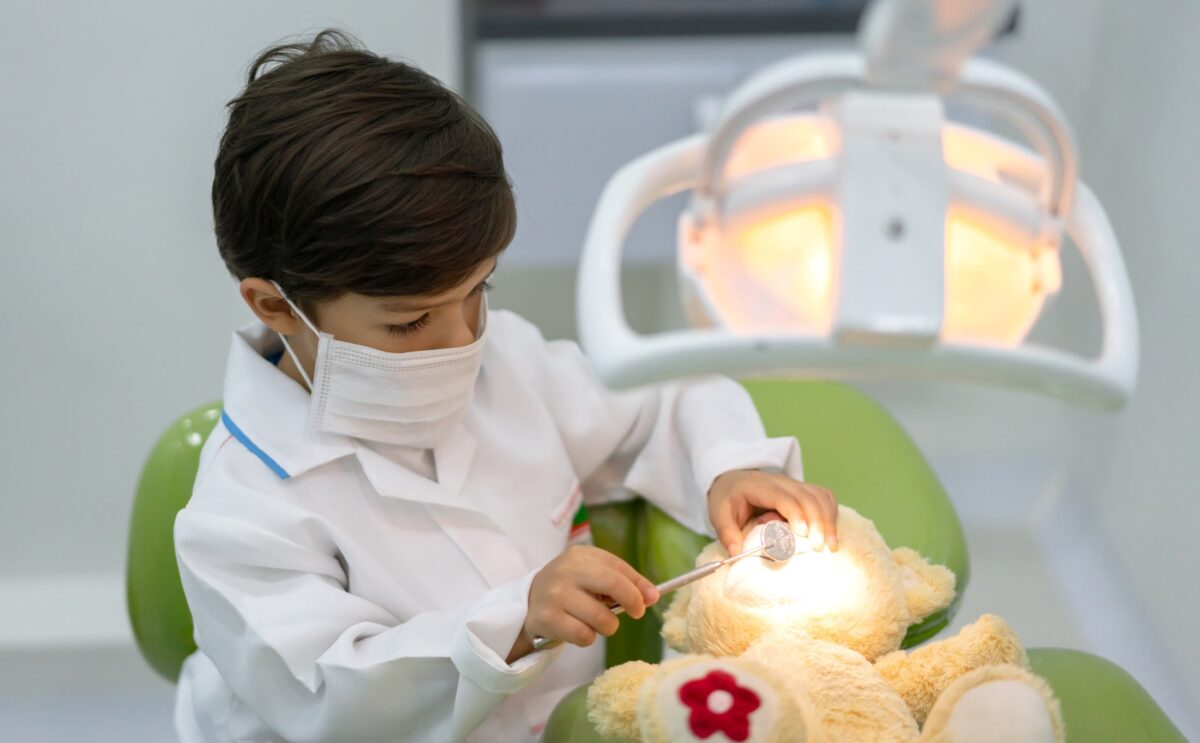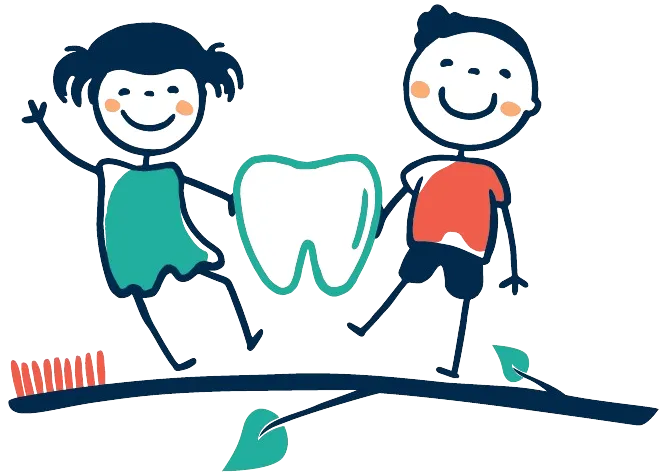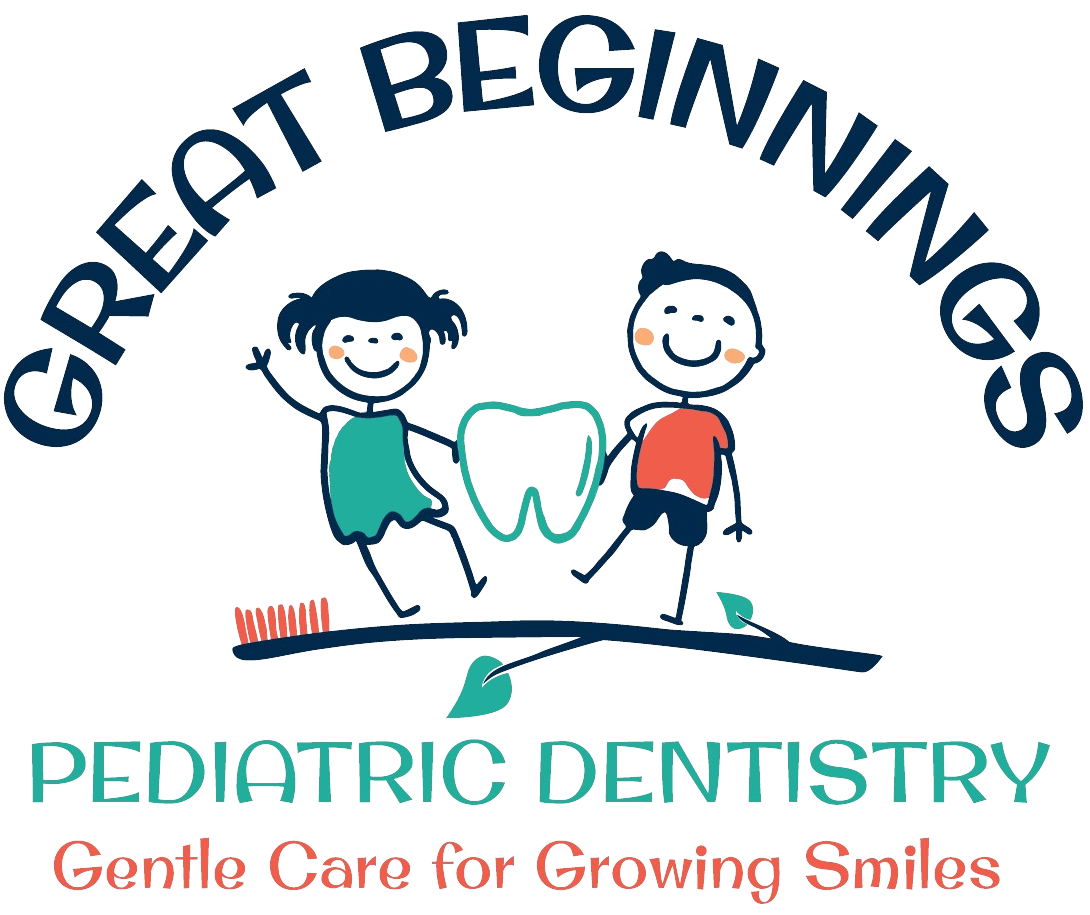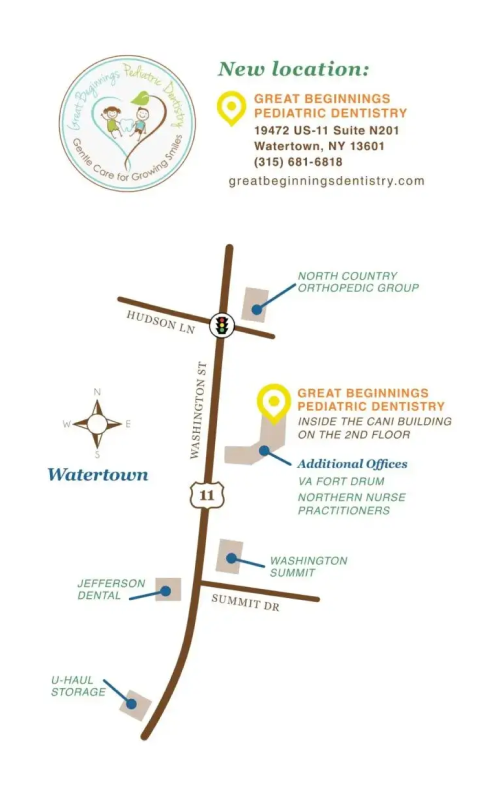
- Following a procedure in which the lip or cheek is numb, be careful not to eat foods that involve chewing until the numbness goes away. Smoothies, milk shakes, and yogurt are examples of “safe” foods that can be consumed while numb. You can resume a normal diet once the numbness is gone, which should be within two to three hours after the appointment.
- Do not allow your child to rub, scratch, or pinch the face while numb because he or she is liable to injure the skin. Your son or daughter may say “it itches” or “hurts,” but is referring to the numb sensation and needs to be assured that the area is “asleep” and will “wake up” in a little while.
- A self-inflicted bite injury is the most common after-treatment complication. Children do not always understand the effects of local anesthesia, and may chew, scratch, suck, or play with the numb area. These actions can cause minor irritations or may be severe enough to cause swelling and abrasions to the tissue. The injured area may appear swollen, white/yellow, and “infected.”. However, this is not a result of infection and does not require antibiotics. You may apply Vaseline / petroleum jelly and the area will heal in 7 to 10 days without leaving any scar from the incident.
When your youngster has had one or more teeth extracted, please follow these instructions:
- Activity may need to be limited.
- Gauze should stay in place with biting pressure for approximately 10 to 15 minutes after you leave our office. When you remove the gauze, it will be soiled; this does not mean your child is bleeding. Often, the blood clot will mix with saliva and appear as excessive bleeding. Leave the gauze out and encourage plenty of liquids.
- Do not allow your child to drink through a straw or spit vigorously. For our younger patients, do not use a “Sippy” cup for a period of two to three days because this may disturb the healing clot and possibly cause infection.
- Your child should try to maintain as normal a diet as possible while avoiding foods that are sharp, crunchy, too hot, or too cold, because the area may be sensitive. Pasta, mashed potatoes, scrambled eggs, and yogurt are just a few examples of the diet your child can immediately resume.
- Encourage plenty of liquids (water, soups, juices, etc.). Let your little one determine when a regular diet can be reintroduced.
- Prescriptions for pain medication are rarely necessary following routine tooth extractions in children. For any discomfort, give your child children’s Motrin or Tylenol as directed by the manufacturer as needed. Do not give aspirin. Your child should only need the pain medicine for 24 hours to 48 hours. If pain persists beyond 48 hours, please call our office.
- Swelling is seldom seen in children following routine extractions. If it does occur, application of an ice pack over the swollen area should be helpful (15 minutes on and 15 minutes off, as needed, during the first 24 hours following tooth removal).
- A clean mouth heals faster. 24 hours after the procedure, gentle brushing around the extraction site may be started, along with warm salt-water rinses (1/4 teaspoon salt to a glass of warm water) to help with any discomfort.
- Your child’s cheek, lip, and tongue will be numb for approximately two to three hours. Please be very careful that he or she does not bite or pick at this area. A self-inflicted bite injury is the most common after-treatment complication.
- Following a procedure in which the lip or cheek is numb, be careful not to eat foods that involve chewing until the numbness goes away. Smoothies, milk shakes, and yogurt are examples of “safe” foods that can be consumed while numb. A normal diet may be resumed once the numbness is gone, which should be within two to three hours after the appointment.
- A new filling makes a change, however small, in the way teeth fit together. The tongue and cheeks will notice a change and adapt to the new addition, too.
- Thermal sensitivity is not uncommon if the decay or preparation was deep, and close to the nerve. If the tooth is responding and healing, sensitivity only lasts for a short time after cold is introduced. Gradually over time, the thermal sensitivity decreases, as the tooth develops a healed, protective layer.
- If a filling or other restoration feels “high” and does not allow the other teeth to close together, it may adjust itself in a day or two. If it continues to touch prematurely, it might need an adjustment at the office. Please call if your youngster needs to be examined.
- Discomfort may be experienced due to muscle tightness or tenderness following operative procedures. Common remedies would be Tylenol, Motrin, or other over-the-counter medications. If the pain persists overnight and the doctor has not advised you to expect discomfort, please call the office for instructions.
- Stainless-steel crowns are indicated for the restoration of baby and permanent molars when teeth have large cavities, when pulp (nerve) therapy has been performed, or as temporary restorations for fractured teeth. Also, in cases where failure of other restorative methods (silver or white fillings) has occurred, and the defect is too large for another filling, a stainless-steel crown is indicated.
- The gums around the tooth may be irritated for several days and may even bleed when brushing. Continue brushing and flossing as usual because clean gums will heal faster and stay healthy. Your child may experience some mild or temporary soreness around the crown. If any discomfort occurs, your youngster may take Children’s Tylenol or Motrin as needed.
The purpose of your child’s space maintainer is to keep open the space needed for a permanent tooth that has yet to erupt. It will be left in place up to the time when the new permanent tooth can be seen breaking through the gum tissue.
- It is crucial that your child avoids the foods listed below. These can get wrapped around the wire, bend the wire, and get stuck in the band, and cause the appliance to break or become loose. Your child should avoid prying or poking at the wire.
- If the space maintainer happens to break or becomes loose, please call our office so we can decide whether the appliance ought to be re-cemented or remade.
Examples of foods to avoid:
- Sticky and chewy: gum, caramels, Mike and Ikes, taffy, Milk Duds, licorice, Gummy Bears, jellybeans, beef jerky, Starbursts, Tootsie Rolls, Tootsie Pops, caramel apples, Dots, Sio-Pokes, Hot Tamales, Now & Later, etc.
- Hard and crunchy: nuts, popcorn, ice, Sweet Tarts, Salted Nut Rolls, Peanut M & Ms, Almond Joy, Heath Bars, Grape Nuts, suckers, hard candies, Jolly Ranchers, lemon drops, jaw breakers. Corn on the cob must be cut off the cob, apples and carrots should be sliced thin.
You can download all of our post-operative care instructions here.





